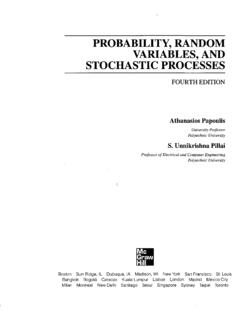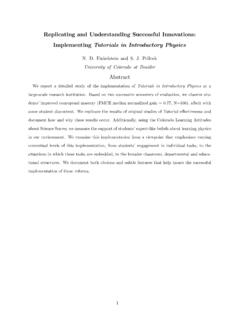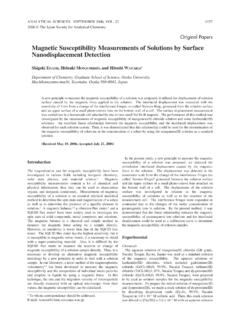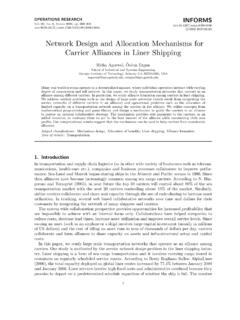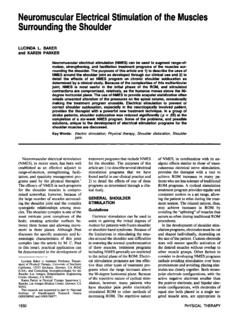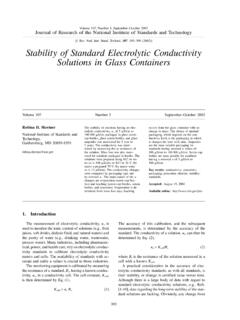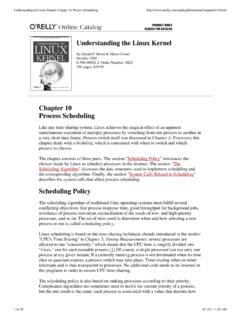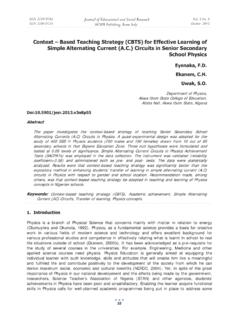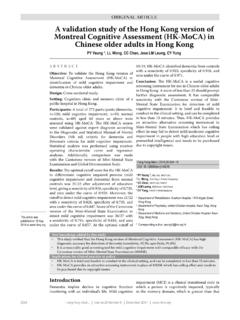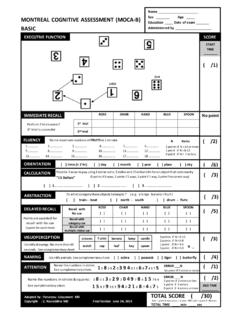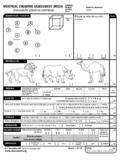Transcription of Montreal Cognitive Assessment (MoCA): Validation …
1 Journal of the International Neuropsychological Society(2012),18, 1031 Published by Cambridge University Press, Cognitive Assessment ( moca ): Validation Studyfor Vascular DementiaSandra Freitas,1,2Ma rio R. Simo es,1,2 Lara Alves,1 Margarida Vicente,1 ANDI sabel Santana31 Faculty of Psychology and Educational Sciences, University of Coimbra, Coimbra, Portugal2 Centro de Investiga a odoNu cleo de Estudos e Interven a o Cognitivo Comportamental (CINEICC), Coimbra, Portugal3 Neurology Department of the Coimbra University Hospital & Faculty of Medicine, University of Coimbra, Coimbra, Portugal(RECEIVEDN ovember 16, 2011; FINALREVISIONMay 8, 2012.)
2 ACCEPTEDMay 8, 2012)AbstractThe Montreal Cognitive Assessment ( moca ) is a brief instrument developed for the screening of milder forms ofcognitive impairment, having surpassed the well-known limitations of the MMSE. The aim of the present study was tovalidate the moca as well as its short version, which was proposed by the NINDS-CSN VCI Harmonization Standardsfor screening Vascular Dementia (VaD) patients. The results, based on a homogeneous sample of 34 VaD patients,indicate that the moca is a psychometrically valid and reliable instrument for Cognitive screening in VaD patients,showing excellent discriminant validity. Both the full and short versions of the moca had excellent diagnostic accuracyin discriminating VaD patients, exhibiting an area under curve (AUC) higher than the MMSE [AUC( moca fullversion) ; 95%.]
3 988; AUC( moca short version) ; 95% .981; AUC(MMSE) ;95% .932]. With a cutoff below 17 on the moca full version and 8 on the short version, the results forsensitivity, specificity, positive and negative predictive values, and classification accuracy were superior compared tothe MMSE. In conclusion, both versions of the moca are valid, reliable, sensitive and accurate screening instrumentsfor VaD patients. (JINS, 2012,18, 1031 1040)Keywords:Neuropsychological test, Validation studies, Geriatric Assessment , Cognition, Vascular Dementia,Alzheimer diseaseINTRODUCTIONIn recent years, the nosologic concept of vascular cognitiveimpairment and dementia has generated a huge controversyand disagreement regarding diagnostic criteria.
4 The existenceof many cases of Cognitive deficit resulting from cere-brovascular disease but not fulfilling the criteria for dementiahas led to the recent emergence of a broader concept namedVascular Cognitive Impairment (VCI; Hachinski & Bowler1993; O Brien, Reisberg, & Erkinjuntti, 2003). In thiscontext, three diagnostic categories are mainly proposed:Vascular Mild Cognitive Impairment (vMCI, also known asVascular Cognitive Impairment No Dementia, VCIND),Vascular Dementia (VaD), and mixed dementia (Moorhouse& Rockwood, 2008; O Brien et al., 2003).The concept of VaD, which is classified as a VCI subtype,was introduced in the 1990s (Roma n et al.)
5 , 1993), replacingthe previous concepts of Cerebral Arteriosclerosis andMulti-infarct dementia (Hachinski, Lassen, & Marshall,1974). This concept s evolution was associated with theproposal of new diagnostic criteria for Vascular Dementiaby the National Institute of Neurological Disorders andStroke Association Internationale pour la Rechercheet l Enseignement en Neurosciences (NINDS-AIREN; Roma net al., 1993). These criteria were organized and furtheroperationalized by van Straaten and collaborators (2003),considering three fundamental axes of diagnosis: (a) presenceof dementia, confirmed by neuropsychological Assessment ;(b) clinical and imaging evidence of cerebrovascular disease;and (c) establishment of a causal relationship betweenthe vascular lesions and the emergence or aggravation ofthe Cognitive deficits.
6 The harmonization and coverage ofclinical, neuroimaging, and anatomic-pathologic data makesthese diagnostic criteria much more objective and selectivethan previous ones, namely the old Hachinski ischemic score(Hachinski et al., 1975), explaining why they have gatheredmore consensus in clinical practice, becoming the mostwidely used in research (Santana, 2006).Correspondence and reprint requests to: Sandra Freitas, Faculty ofPsychology and Educational Sciences, University of Coimbra, Rua doCole gio Novo, Apartado 6153, 3001-802 Coimbra, Portugal. studies, although not consistent, havegenerally reported that VaD is the second most commoncause of dementia, after Alzheimer s disease (AD) (CanadianStudy of Health and Aging Working Group, 1994; Lobo,Martinez-Lage et al.)
7 , 2000). In Europe, the prevalence rate isapproximately 16/1000 in people over 65 years old, repre-senting approximately 20% of all dementia cases (Ikedaet al., 2001; Lobo, Launer et al., 2000). Moreover, in someAsian countries, VaD appears to be more prevalent than AD(Ikeda et al., 2001; Ueda, Kawano, Hasuo, & Fujishima,1992). Both prevalence and incidence of VaD and ADincrease exponentially with age, and even though the increasein VaD seems to be less steep than for AD, the prevalencerate for individuals over 100 years old surpasses 52/1000(Jorm & O Brien, 2004; Lobo, Launer et al., 2000).This high prevalence of VaD, highlight the importance ofan accurate clinical identification of this disease.
8 Moreover,this purpose is generally acknowledged to be difficult, largelybecause of the clinical features of VaD (Garrett, Paul, Libon& Cohen, 2004; Reed et al., 2004). The clinical features ofthe vascular Cognitive impairment reflect the location, num-ber, and extent of underlying ischemic, hemorrhagic, orhypoperfusion lesions (Desmond, 2004; Ueda et al., 1992).As a result of this heterogeneity in mechanisms, vascularterritory involvement and location, Cognitive impairment inVaD is highly variable and potentially affects all cognitivedomains. Despite this, the preponderant neuropsychologicalfeatures of VaD patients point to an overall profile of cognitivedysfunction that is frontally located in the brain, due to the earlyinvolvement of executive cortico-subcortical circuits (O Brienet al.)
9 , 2003; Roma n, 2003; Roma n & Royall, 1999). Thedysexecutive syndrome has been recurrently associated withthe vascular clinical conditions (Desmond, 2004; Lamar, Price,Giovannetti, Swenson, & Libon, 2010). Additionally, corticalfunctions such as language, calculation, and orientation tend tobe relatively preserved, in contrast with AD patients (Looi &Sachdev, 1999; Roma n & Royall, 1999). Deficits in recentepisodic memory are usually less severe in VaD patients thanin degenerative dementias, while concentration difficulties,working memory dysfunction, and psychomotor slowing areearly and prominent symptoms in VaD (Looi & Sachdev,1999; O Brien et al.
10 , 2003; Roma n, 2003).An additional factor for this difficult to diagnose VaDrefers to the insufficient breadth of representation of thecognitive abilities relevant to Cognitive impairment asso-ciated with the disease in Cognitive Assessment tools, anessential condition for the accurate Cognitive recognitionand Assessment (Mungas, Reed, & Kramer, 2003). In fact,traditional screening tools frequently do not include measuresof important domains initially impaired in VaD, mainly theexecutive functions, or the evaluation is very superficialusing low complex tasks. This is the case of the Mini MentalState Examination (MMSE; Folstein, Folstein, & McHugh,1975), which is the most widely used Cognitive screeninginstrument for dementia, despite its well-known limitations;namely, it has low sensitivity to milder forms of cognitiveimpairment and does not evaluate executive functioning(Freitas, Santana, & Simo es, 2010; Ihl, Fro lich, Martin, &Maurer, 1992; Tombaugh & McIntyre, 1992; Wind et al.
